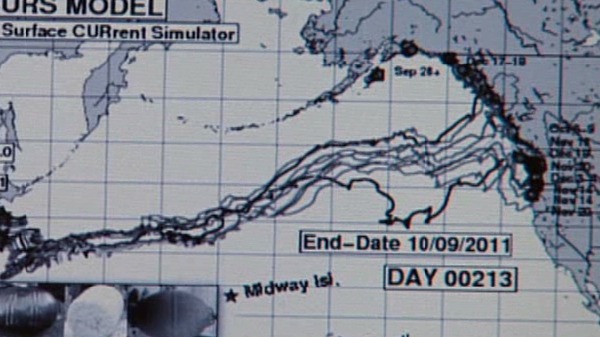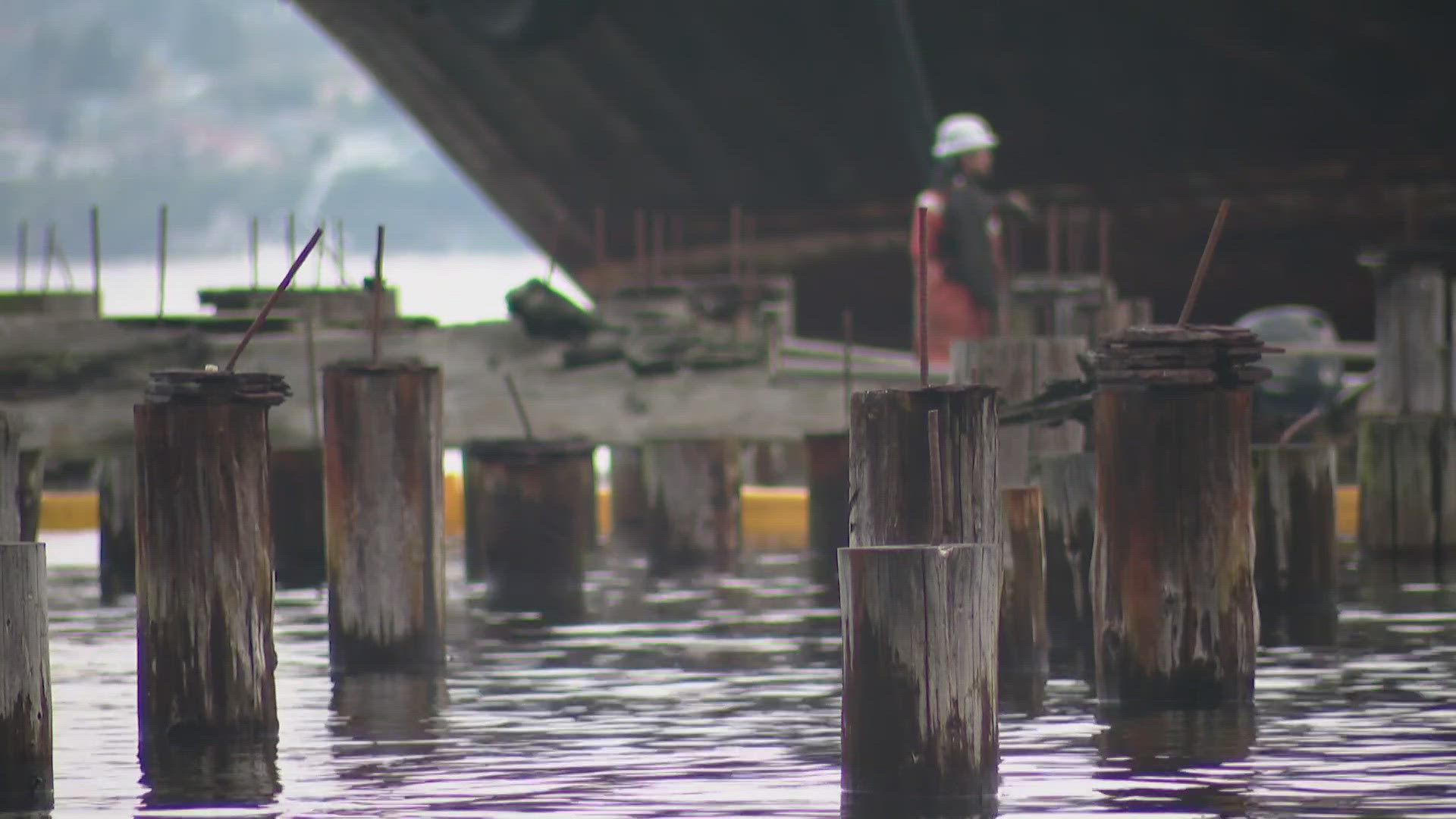SEATTLE -- Curtis Ebbesmeyer is a detective of sorts, tracking the aftermath of a devastating disaster along the Washington coast.
Last March's tsunami in Japan killed 20,000 people. A debris field 1,000 miles wide and 2,000 miles long was captured on satellite making its way east. Some of it has begun washing up on Washington beaches and at least fourbuoys have come ashorefrom Cape Flattery off Neah Bay to Ocean Shores.
But that massive debris field has now disappeared from view. So, where did it go?
It's sort of like the little mosquitos we don't see buzzing around but when you're camping you know when they bite you. It's out there, said Ebbesmeyer.
Ebbesymeyer says winter storms have likely broken the mass up into smaller, less visible patches. The debris started coming ashore at the end of September around Kodiak Alaska and has spread as far south as the central Oregon coast.
It's allpart of the first wave to hit America and it containsclues as to what will come. At this point the situation looks to be far better than expected as fears over gigantic gluts of debris clogging major west coast ports may be unfounded.
It might clog up a beach. It's possible that a debris patch, maybe a mile across could clog up a small port. But these are floating islands. Large pieces of wood or even wings from small airplanes can do serious damage to boat or people who are in the water, said Ebbesmeyer.
Ebbesmeyer's work has garnered him a bit of notoriety, but it's attention he'd rather not have. He calls the tsunami Japan's 9/11 of natural disasters. He hopes to help put together pieces of the countless broken lives that wash up on our shores, and bring some comfort to those who have lost so much.
You have to realize that may be the only piece of a loved one that's ever going to be reported or found. It's so important, said Ebbesmeyer.
If you find debris washed ashore that you think may be related to the tsunami, contact Dr. Ebbesmeyer here.


